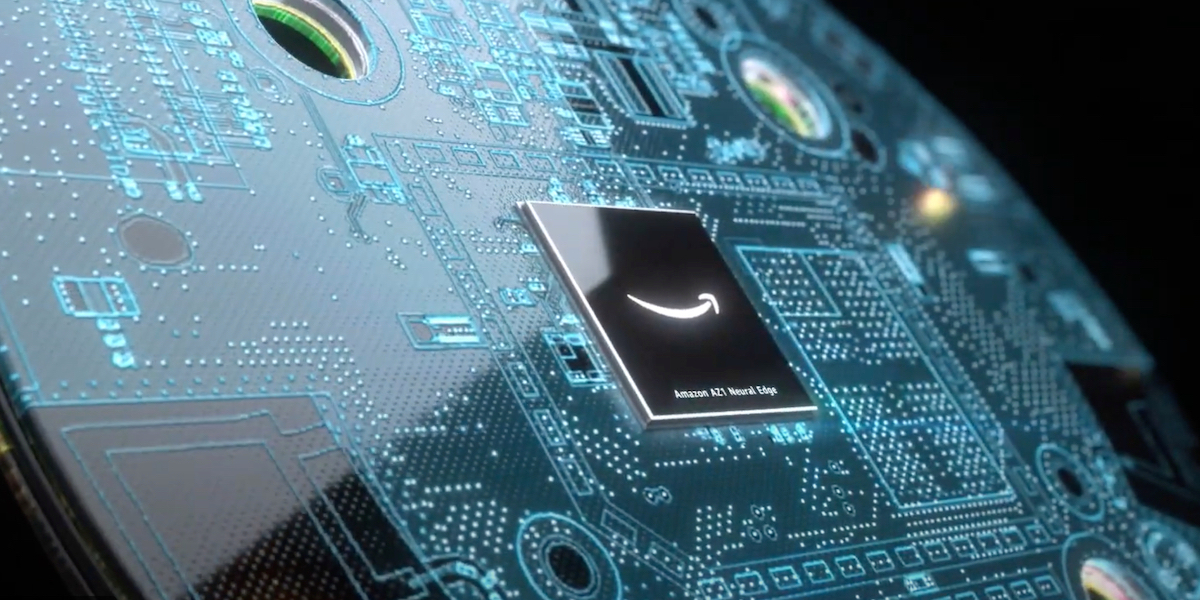Amazon’s naked ambition to become part of everyone’s daily lives was on full display this week at its annual hardware event. It announced a slew of new Alexa-powered devices, including a home surveillance drone, a suite of Ring-branded car alarm systems, and miscellany like an adorable little kids’ Echo device. But it’s clear Amazon’s strategy has shifted, even if only for a product cycle, from going wide to going deep.
Last year, Amazon baked its virtual assistant into any household device that could accommodate a chip. Its list of new widgets with Alexa seemed a mile long and included a menagerie of home goods, like lamps and microwaves. The company also announced device partnerships that ensure Alexa would live on some devices alongside other virtual assistants, tools to make it easier for developers to create Alexa skills, networking devices and capabilities, and wearables. It was a volume play and an aggressive bid to build out its ecosystem in even more markets.
This year, Amazon had fewer devices to announce, but it played up ways it has made Alexa itself better than ever. That’s the second prong of the strategy here: Get Alexa everywhere, then improve the marquee features such that the experience for users eclipses anything the competition offers.
As is always the case at these sorts of events, Amazon talked big and dreamy about all the new Alexa features. Users will find out for themselves whether this is the real deal or just hype when Amazon rolls out updates over the course of the next year (they’re landing on smart home devices first). But on paper and in the staged demos, Alexa’s new capabilities certainly seem to bring it a step closer to the holy grail of speaking to a virtual assistant just like talking to a person.
That’s the crux of what Amazon says it has done to improve Alexa, imbuing it with AI to make it more humanlike. This includes picking up nuances in speech and adjusting its own cadence, asking its human conversation partner for clarifications to fill in knowledge, and using feedback like “Alexa, that’s wrong” to learn and correct itself.
Amazon is particularly proud of the new natural turn-taking capabilities, which help Alexa understand the vagaries of human conversation. For example, in a staged demo two friends talked about ordering a pizza through an Alexa device. Like normal humans, they didn’t use each other’s names in the conversation, they paused to think, they changed their minds and adjusted the order, and so on. Alexa “knew” when to chime in, as well as when they were talking to each other and not to the Alexa device.
At the event, Alexa VP and head scientist Rohit Prasad said this required “real invention” and that the team went beyond just natural language processing (NLP) to embrace multisensory AI — acoustic, linguistic, and visual cues. And he said those all happen locally, on the device itself.
This is thanks to Amazon’s new AZ1 Neural Edge processor, which is designed to accelerate machine learning applications on-device instead of in the cloud. In the event liveblog, Amazon said: “With AZ1, powerful inference engines can run quickly on the edge — starting with an all-neural speech recognition model that will process speech faster, making Alexa even more responsive.” There are scant details available about the chip, but it likely portends a near future when Alexa devices are able to do more meaningful virtual assisting without an internet connection.
Given the utter lack of information about the AZ1, it’s impossible to say what it can or can’t do. But it would a potential game changer if it was able to handle all of Alexa’s new tricks on devices as simple as an Echo smart speaker. There could be positive privacy implications, too, if users were able to enjoy a newly powerful Alexa on-device, keeping their voice recordings from Amazon’s cloud.
But for Amazon, going deep isn’t just about a more humanlike Alexa; it involves pulling people further into its ecosystem, which Amazon hopes is the sum of adding device and service ubiquity to more engaging user experiences.
Part of that effort centers on Ring devices, which now include not just front-door home security products but also car security products and a small autonomous drone for the inside of your home. They’re essentially surveillance devices — and taken together, they form an ecosystem of surveillance devices and services that Amazon owns, and that connects to law enforcement. You can buy into it as deeply as you want, creating a surveillance bubble inside your home, around your home, and on board your vehicles, regardless of where you’ve parked them. The tension over Ring devices — what and who they record, where those recordings go, and who uses them for what purpose — will only be amplified by this in-home drone and the car alarm and camera.
Whether Amazon goes deep or wide, what hasn’t changed is that it wants to be omnipresent in our lives. And with every event’s worth of new devices and capabilities, the company takes another step closer to that goal.
